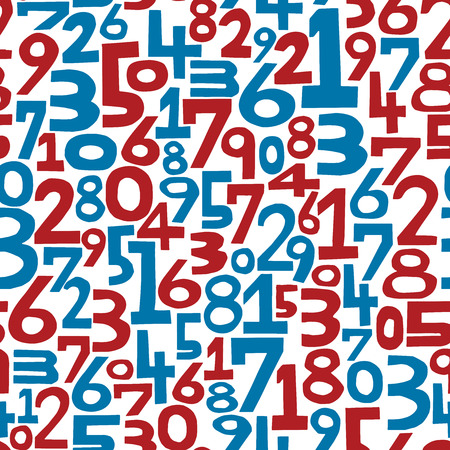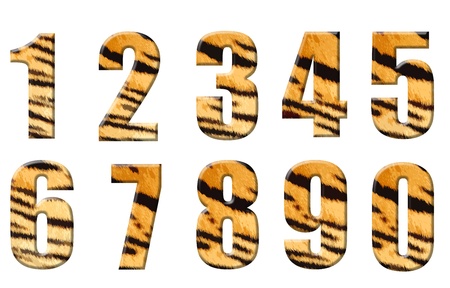Introduction to Bazi and the Four Pillars of Destiny
Bazi, also known as the Four Pillars of Destiny, is a centuries-old system rooted in Chinese metaphysics. While its origins trace back over a thousand years, Bazi’s insights into personality, life direction, and relationships have made it increasingly popular across the globe—including among Americans interested in self-discovery and compatibility. This approach breaks down your birth data into four “pillars”—year, month, day, and hour—which together create a unique energetic blueprint.
Historical Roots of Bazi
Bazi emerged during the Tang Dynasty and was refined throughout Chinese history. It was traditionally used by scholars, emperors, and families to guide major life decisions. Today, many use Bazi as a tool for personal growth or to gain clarity about career choices, partnerships, and family dynamics.
The Four Pillars Explained
Each pillar in Bazi represents a key aspect of your destiny. Here’s how they break down:
| Pillar | Represents | Example (Birth Data) |
|---|---|---|
| Year | Ancestry & Outer World | 1990 (Metal Horse) |
| Month | Parents & Career Potential | March (Wood Rabbit) |
| Day | Your True Self & Marriage Life | 12th (Earth Dragon) |
| Hour | Children & Ambitions | 6:00 AM (Fire Tiger) |
Cultural Relevance in Modern America
Bazi may be ancient in origin, but its wisdom still resonates today—especially for those seeking deeper understanding beyond Western astrology or personality tests. Many Americans find that Bazi offers practical guidance on compatibility with partners, friends, and colleagues. It’s increasingly common to see people consult their Four Pillars before big milestones like marriage or job changes.
Bazi as a Tool for Understanding Character and Relationships
The Four Pillars provide a map of your strengths, challenges, and natural tendencies. By comparing two people’s Bazi charts, you can spot areas of harmony or potential friction—making this an invaluable tool for navigating relationships at home or work.
2. Breaking Down the Four Pillars: Year, Month, Day, and Hour
When exploring Bazi, or the Four Pillars of Destiny, it’s essential to understand what each pillar represents in your life. Think of these pillars as four key building blocks that shape your personality, relationships, and even your life path. Let’s take a closer look at each one and how they come together to form a unique “cosmic blueprint” for every individual.
The Four Pillars at a Glance
| Pillar | What It Represents | Influence on Life |
|---|---|---|
| Year Pillar | Family background, ancestry, early environment | Cultural roots, social circle, inherited traits |
| Month Pillar | Parental influence, career potential, youth years | Work ethic, ambitions, values shaped by upbringing |
| Day Pillar | The self (Day Master) and primary relationships | Core personality, marriage compatibility, close partnerships |
| Hour Pillar | Inner thoughts, dreams, children, later life | Hidden talents, aspirations, legacy you leave behind |
Year Pillar: Your Roots and Social Circle
The Year Pillar acts like your personal foundation—it tells you about your family heritage and the environment you were born into. In a sense, it’s similar to how Americans might talk about their “family tree” or “roots.” It can also reflect the kind of people you attract into your social network. For instance, someone with a strong Metal element in their Year Pillar may value tradition and loyalty in friendships.
Month Pillar: Shaping Your Ambitions and Values
Your Month Pillar relates to your parents’ influence and the values they instilled during your formative years. It often points toward your career strengths and how you approach goals. Think of this as the “work ethic” you picked up from home—something many Americans would associate with their upbringing shaping who they become professionally.
Day Pillar: Who You Are at the Core
The Day Pillar is all about your true self (called the Day Master) and your closest relationships—especially marriage or long-term partnerships. This is the most personal pillar because it reveals your authentic character and how you connect deeply with others. In Bazi compatibility readings, the Day Pillar plays a central role in determining if two people are truly compatible for a meaningful relationship.
Hour Pillar: Dreams, Children, and Legacy
The Hour Pillar taps into your inner world: your hopes for the future, creative ideas, and even your relationship with children (whether literal or symbolic). It also hints at what you’ll be remembered for—the “legacy” you hope to leave behind. Americans might think of this as planning for retirement or imagining their long-term impact on family and community.
How the Four Pillars Work Together
No single pillar defines who you are; instead, it’s how all four interact that creates a complete picture of your destiny. The balance—or imbalance—between them can explain why someone might feel pulled between family expectations (Year), personal dreams (Hour), career ambitions (Month), and romantic desires (Day).

3. Principles of Compatibility in Bazi
When it comes to understanding Bazi compatibility, its all about how two peoples birth charts interact. In Bazi, a persons destiny is mapped out by the Four Pillars—year, month, day, and hour—each made up of two parts: a Heavenly Stem and an Earthly Branch. The mix between these stems and branches forms the foundation for discovering relationship harmony or friction.
The Interplay of Heavenly Stems and Earthly Branches
Heavenly Stems and Earthly Branches are like the main characters in your personal story. Think of the ten Heavenly Stems as five elements (Wood, Fire, Earth, Metal, Water), each with yin and yang qualities. The twelve Earthly Branches represent the Chinese zodiac animals and carry their own elemental energies.
How Compatibility Is Judged
Bazi uses several key rules to check if two people have good chemistry:
- Elemental Balance: Do your elements support or clash with each other? For example, Water nourishes Wood but puts out Fire.
- Stems Relationships: Some stems combine harmoniously (like Yin Wood & Yang Metal), while others may conflict.
- Branches Relationships: Certain zodiac signs (branches) form positive combinations (known as “Three Harmonies” or “Six Combinations”), while others may clash or punish each other.
Key Relationships at a Glance
| Element/Animal | Supports | Clashes With |
|---|---|---|
| Wood | Fire | Metal |
| Fire | Earth | Water |
| Earth | Metal | Wood |
| Metal | Water | Fire |
| Water | Wood | Earth |
| Rat (Zi) | Ox (Chou) | Horse (Wu) |
| Tiger (Yin) | Pig (Hai) | Monkey (Shen) |
Main Takeaways for Compatibility Checks:
- Harmony is best when elements and animals support each other.
- Avoid pairings where major clashes appear in both stems and branches.
- Bazi practitioners look at all four pillars—not just birth years—to get a full picture of compatibility.
Bazi compatibility isnt just about matching zodiac animals; its a nuanced look at how your elemental makeup fits together with someone elses. By focusing on the dynamic dance between heavenly stems and earthly branches, you can discover why some relationships feel natural and easy, while others take more work to balance.
4. Applying Bazi Compatibility in Modern American Life
Understanding Bazi in Everyday Interactions
Bazi, or the Four Pillars of Destiny, isn’t just an ancient Chinese tradition—it can be surprisingly relevant to daily life in America today. When you know your own Bazi chart and understand how it interacts with others, you can gain fresh insights into relationships, friendships, and even workplace dynamics. Let’s explore how Bazi compatibility works in these contemporary settings.
Relationships: Love and Partnership
Many Americans are curious about compatibility when it comes to dating or marriage. With Bazi, you can look beyond zodiac signs and get a deeper understanding of your emotional needs and communication styles. For example, if your Day Master (the main element representing you) is Fire and your partner is Water, you might find that you’re drawn together but also challenged by different approaches to life. By knowing this, couples can learn where to compromise or support each other.
Sample Compatibility Table for Couples
| Day Master Element | Compatible Elements | Challenging Elements |
|---|---|---|
| Wood | Water, Fire | Metal, Earth |
| Fire | Wood, Earth | Water, Metal |
| Earth | Fire, Metal | Wood, Water |
| Metal | Earth, Water | Fire, Wood |
| Water | Metal, Wood | Earth, Fire |
This table offers a quick reference for how different elements might interact in a romantic relationship.
Friendships: Building Strong Social Circles
Bazi compatibility isn’t limited to romance. It can help with friendships too! For example, if you notice that you naturally get along with people who have certain elements in their charts, you might seek out more friends with those qualities. Understanding each other’s strengths—like creativity (Wood), passion (Fire), or dependability (Earth)—can help build stronger bonds within diverse social circles.
Bazi Traits and Friendship Styles Table
| Main Element Trait | Description in Friendship Context |
|---|---|
| Wood (Growth) | Nurturing, supportive friend who encourages growth and new ideas. |
| Fire (Passion) | Lively companion who brings excitement and warmth to the group. |
| Earth (Stability) | The reliable one who’s always there to lend a hand or advice. |
| Metal (Structure) | The organizer who helps keep everyone on track and motivated. |
| Water (Adaptability) | The flexible friend who goes with the flow and adapts easily. |
The Workplace: Enhancing Team Dynamics and Leadership Styles
Bazi can also be applied at work. In the U.S., teamwork and collaboration are highly valued. Knowing your colleagues’ Bazi types can help managers assign roles based on natural strengths or predict where conflicts may arise. For instance, someone with strong Metal energy might excel in structured tasks like project management, while a Fire person could thrive in creative brainstorming sessions.
Bazi Elements in Common Job Roles Table
| Bazi Element Strength | Suits These Roles |
|---|---|
| Wood | Mediators, teachers, innovation leads |
| Fire | Salespeople, marketers, event planners |
| Earth | HR professionals, counselors, team leads |
| Metal | Accountants, engineers, quality control |
| Water | Consultants, researchers, strategists |
Cultural Sensitivity: Adapting Bazi for American Diversity
Bazi can be adapted for anyone regardless of cultural background. In the melting pot of America, respecting individuality is important. Use Bazi as a tool for self-awareness and empathy rather than as a strict rulebook. Remember: Compatibility doesn’t mean sameness—it’s about understanding differences so we can connect better with each other at home, at work, or among friends.
5. Common Misconceptions and Ethical Practice
Understanding the Myths Around Bazi Compatibility
Bazi, or the Four Pillars of Destiny, is an ancient Chinese system for understanding personality and relationship dynamics. As interest in Bazi grows in the U.S., some misunderstandings can pop up. Lets clear up a few common myths:
| Misconception | Reality |
|---|---|
| Bazi tells your unchangeable fate. | Bazi offers insight into tendencies and potential; it doesnt lock you into a fixed future. |
| Bad compatibility means doomed relationships. | No pairing is 100% “bad”—Bazi highlights strengths and challenges so couples can grow together. |
| You must avoid certain people based on their Bazi chart. | Bazi is a tool for awareness, not exclusion; healthy relationships are built on communication and respect. |
| Only experts can use Bazi. | Anyone can start learning! Even basic knowledge can help you understand yourself and others better. |
Ethical Use of Bazi in Daily Life
If youre using Bazi insights to guide your interactions, its important to do so respectfully. Here are some tips to keep things positive and ethical:
- Respect Privacy: Dont analyze someones Bazi without their consent. Its like reading a diary—it should be private unless shared willingly.
- Avoid Stereotyping: Remember, people are more than their charts. Avoid making snap judgments based on someones birth details alone.
- Empower, Don’t Limit: Use Bazi to encourage growth and understanding, not to box people in or predict negative outcomes.
- Cultural Sensitivity: Not everyone believes in or values Bazi. Be mindful when sharing your insights in multicultural settings.
- Combine with Other Tools: Consider Bazi as one perspective among many—communication, empathy, and shared experiences all matter too.
Quick Tips for Everyday Practice
- If discussing Bazi with friends or partners, frame it as fun self-discovery rather than rigid rules.
- Use compatibility findings as conversation starters about strengths and challenges—not as reasons to judge or exclude someone.
- If you’re new to Bazi, start simple: focus on understanding your own chart before exploring compatibility with others.

